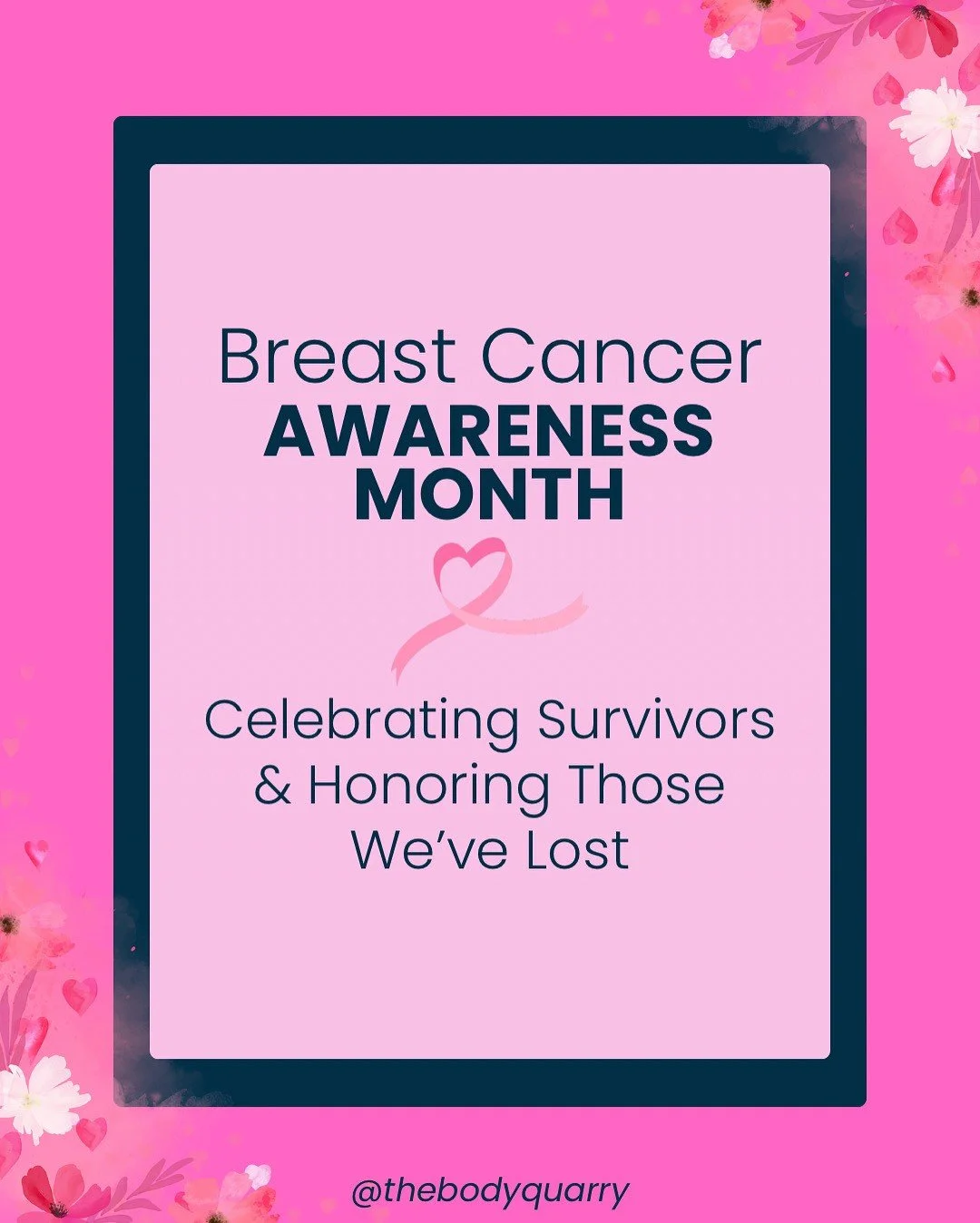Breast Cancer Awareness Month 2025
Learn more on Instagram
SHOW YOU CARE, BE MORE AWARE!
Celebrating Breast Cancer awareness month with information, resources, hope, & love!
My mom was a breast cancer survivor, and my mother-in-law still is, along with several other family members and friends. Therefore, this particular topic is very close to my heart.
What is breast cancer?
Cancer begins in the cells which are the basic building blocks that make up tissue. Tissue is found in the breast and other parts of the body. Sometimes, the process of cell growth goes wrong and new cells form when the body doesn’t need them and old or damaged cells do not die as they should. When this occurs, a build up of cells often forms a mass of tissue called a lump, growth, or tumor.
Breast cancer occurs when malignant tumors develop in the breast. These cells can spread by breaking away from the original tumor and entering blood vessels or lymph vessels, which branch into tissues throughout the body. When cancer cells travel to other parts of the body and begin damaging other tissues and organs, the process is called metastasis.
Information shared from www.nationalbreastcancer.org
Breast cancer facts & statistics
Breast cancer is the most common cancer in women in the United States, except for skin cancers. It accounts for about 30% (or 1 in 3) of all new female cancers each year.
The American Cancer Society's estimates for breast cancer in the United States for 2025 are:
About 316,950 new cases of invasive breast cancer will be diagnosed in women.
About 59,080 new cases of ductal carcinoma in situ (DCIS) will be diagnosed.
About 42,170 women will die from breast cancer.
Breast cancer mainly occurs in middle-aged and older women. The median age at the time of breast cancer diagnosis is 62. This means half of the women who developed breast cancer are 62 years of age or younger when they are diagnosed. A very small number of women diagnosed with breast cancer are younger than 45.
*Information shared from www.cancer.org
Breast cancer differences by race and ethnicity
According to the National Breast Cancer Foundation, “the numbers don’t lie. It is clear that race and ethnicity are major factors in the survivability of breast cancer. Though some research suggests biological factors could play a small role, the overwhelming cause is a lack of access to quality care and socio-economic inequalities. …Information about breast health is not readily available in underserved and minority communities or for people in low socioeconomic status brackets in the U.S. Women in these communities are often unaware of the importance of early detection of breast cancer or that services are available to help them navigate the complex healthcare system.”
*Information shared from www.nationalbreastcancer.org
Male breast cancer facts
Male breast cancer key highlights
Male breast cancer begins as a growth of malignant or cancerous cells in the breast tissue. All people, male and female, have breast tissue.
Men with breast cancer often find a lump in their breast tissue.
Male breast cancer is rare, representing about 1% of total breast cancer cases.
Breast cancer in men may occur at any age, but is typically identified in men ages 60 to 70.
Invasive ductal carcinoma (IDC) is the most common type of breast cancer in men; this cancer begins in the milk ducts and spreads beyond the cells that line the breast ducts.
Treatment for male breast cancer often involves surgery to remove the cancerous tissue as well as chemotherapy and radiation.
Nearly all breast cancer in men is estrogen receptor positive (ER+) with treatment including hormonal therapy, just as in 70% of female breast cancer cases.
Factors that increase a man’s risk of breast cancer include family history of breast cancer, age, genetic mutations (such as BRCA1 or BRCA2), and higher estrogen levels.
Men should be familiar with how their breast tissue typically looks and feels so they can detect any changes in the tissue.
*Information shared from www.nationalbreastcancer.org
National Mammography Day 2025 - October 17
Set a date for yourself to get your annual mammogram done. Early detection could mean early treatment and the difference between life and death. Based upon the results, there may be follow-up necessary, or you just may continue on with your self-exams.
*Information shared from www.nationalbreastcancer.org
For more insight on Breast Cancer awareness month and more inspiration around health, wellness, and wellbeing, follow The Body Quarry on Instagram.



